Star Trek: The Motion Picture’s reputation among Trekkies new and old is… complex, to say the least. Released in 1979, two years out from the smash success of Star Wars (1977) and the tail end of a growing mass of convention-attending fans who worshipped the abruptly-canceled 1960s TV series, it was neither fish nor fowl. It was too cerebral for the whiz-bang spectacle of theatergoers, too tethered to IP for the psychedelic 2001: A Space Odyssey (1968) vibes director Robert Wise (The Day the Earth Stood Still, The Sound of Music) was going for.
Sure, it made a big splash at the box office, enough to give the series a chance to make more modest, but splashy cinematic efforts like Star Trek II: The Wrath of Khan (1982). But its reputation has dwindled over the years, with some polls putting it near the bottom of their list of worst Kirk-era Trek films of all time (alongside The Final Frontier and Into Darkness).
But for all its flaws — its rushed production schedule, its origins as an erstwhile pilot for a revived version of the show — I’ve always held an extremely soft spot for it in my heart. Where some see a mess, I see experimentation; where folks see a lack of action, I see patient rumination on Big, Heady Philosophical Concepts. And most notably, where others see a drab, lifeless carnival ride with flat characters, I see One of the Horniest Sci-Fi Films of All Time.
I’m not the only one to see it, of course; YouTube’s own Jessie Gender (herself a valuable resource for all things Trek and queer) has a video breaking down a lot of the randy subtext of Trek’s red-headed cinematic stepchild, and it’s worth a watch. But in celebration of the film’s 4K restoration (more specifically, that of the 2000s “Director’s Edition,” which the late Wise supervised to update some of the film’s effects), which premiered on First Contact Day (April 5th), I wanted to revisit what makes the film the most unexpectedly human adventure of the series — its unabashed take on sexuality and how it links to our innate need for intimacy and connection.
On its surface, The Motion Picture is dry as dishwater: Admiral Kirk (William Shatner, in perhaps his least hammy performance in the series) pulls rank and takes command of the newly-refitted USS Enterprise, “the only ship in the quadrant” (isn’t that just the way?) to intercept an enormous, unstoppable object moving slowly but surely towards Earth. They explore the mysterious vessel they find — which they learn is called V’Ger — and try to communicate with it, understand its motivations, and prevent it from destroying Earth.
But while The Motion Picture clearly rode a wave of fast-paced space adventures heralded by Star Wars, Wise’s ambitions were clearly more attuned to the philosophical bent of the Golden Age sci-fi of the ‘60s and early ‘70s — Close Encounters of the Third Kind (1977), 2001: A Space Odyssey (1968), Logan’s Run (1976) — more patient explorations of humankind’s understanding of themselves. And in this case, The Motion Picture was keenly concerned with that fundamental element of the human experience: sexuality and connection.
It’s hardly a secret that Star Trek creator Gene Roddenberry was an old-school hippie, an idealistic dreamer of free love and sexual liberation. (Whether he wielded those promiscuous dreams in ethical ways, from casting couches to accusations of sexual harassment, is a discussion for another day.) His vision of the future, of Star Trek, was of a human utopia freed from the shackles not just of poverty and discrimination, but of sexual hangups. For all its apparent sleepiness, The Motion Picture is very much an expression of that philosophy and all the buzzing eroticism that lies under the surface.
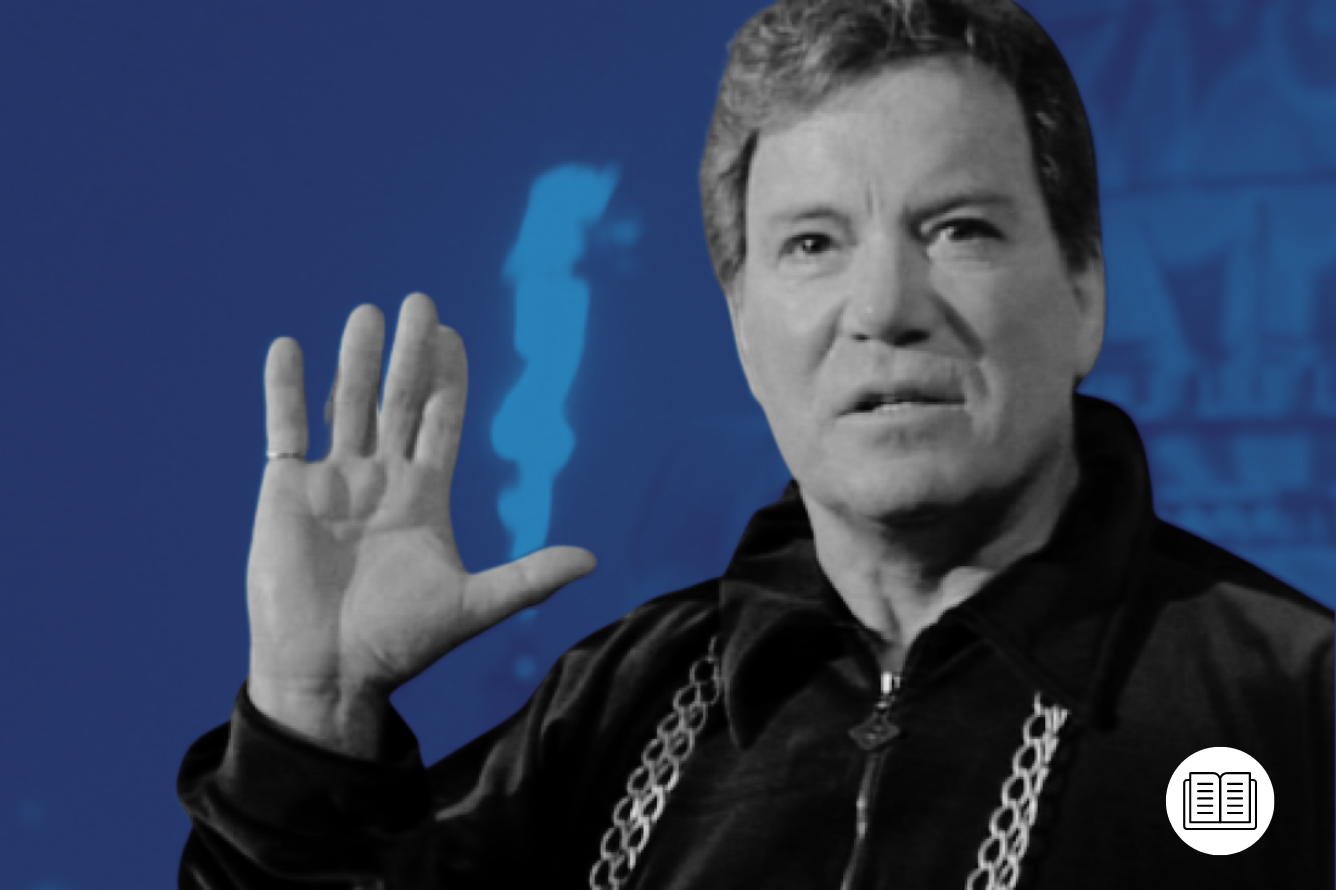
The Future, But Make It Sexy
While future Trek films and shows would head more in a Horatio Hornblower, Age of Sail route with their aesthetics, Star Trek: The Motion Picture fully embraces the free-love hippie aesthetics of the late ‘70s. The costumes, a one-and-done affair from costume designer Robert Fletcher, have been (rightly) maligned as unsightly, impractical, and uncomfortable for the actors to wear — all taupe tunics and skin-tight onesies with fabric connected to their boots.
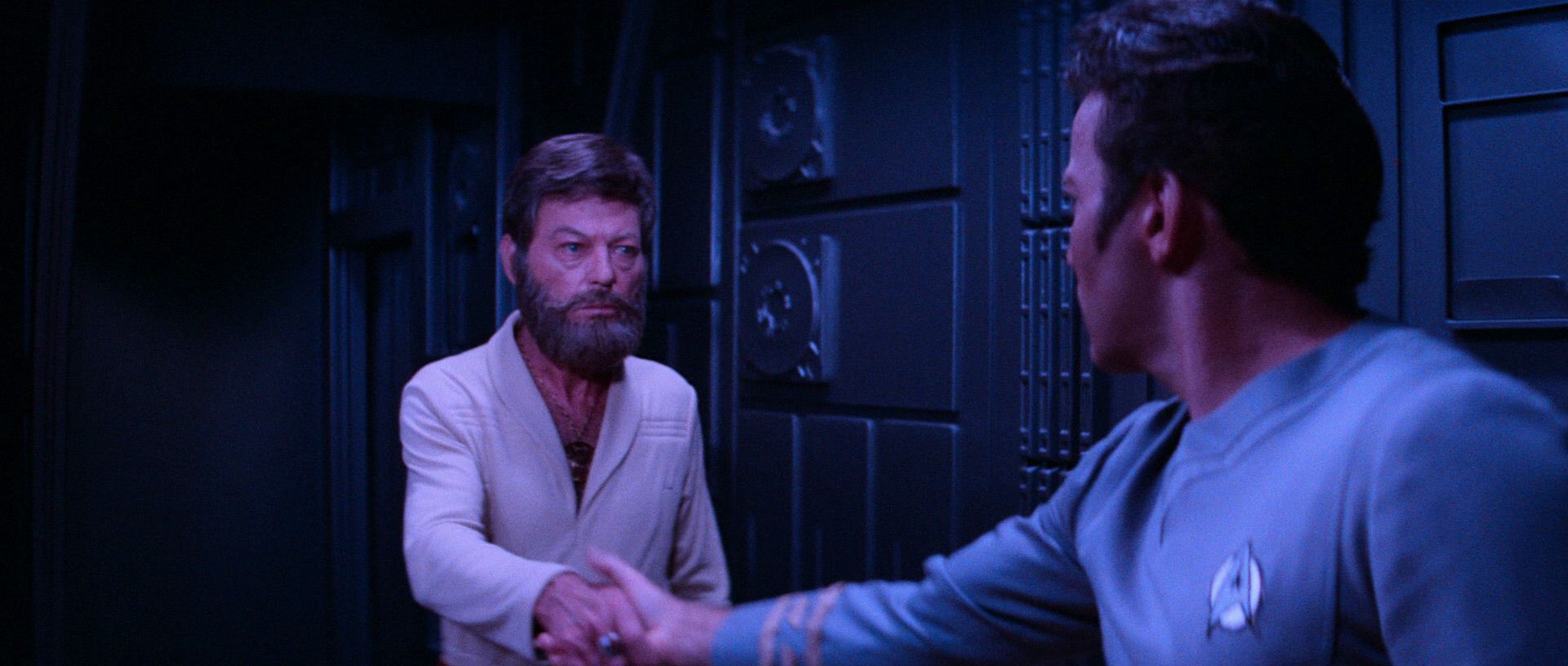
And yet, it functions as a uniquely exhibitionist version of Starfleet, everyone in skin-tight (and skin-toned) jumpsuits that serve up some unsubtle glimpses of the Enterprise crew’s final frontiers. The variants on these outfits are no less lurid, especially on the main cast: Kirk’s white-tee look halfway through the film shows off his hairy arms, Bones (DeForest Kelley) is beamed onto the Enterprise seemingly from Studio 54, with his Bee Gees beard, gold chain and open-breasted tunic with rivulets of chest hair poking through. It’s all ‘70s horndog aesthetic all the way through, the muted Earth tones and wider variety in outfits making Starfleet look less militaristic and more like a sex commune in upstate California. It’s giving “Vegas floor show,” and what’s sleazier than that?

How Kirk Got His Groove Back: TMP as Interstellar Midlife Crisis
Most, if not all, of the classic Trek films are in some way about aging and obsolescence, the Enterprise crew fighting their middle-aged (or, in some cases, elderly) bodies to prove themselves interstellar adventurers in a galaxy that’s moved on from them. That’s never clearer than in Kirk’s journey in The Motion Picture, who (subtextually at least) fights his own interstellar impotence.
By the time we first see him, he’s an admiral, a desk jockey who hasn’t “logged a single star hour in over two and a half years.” His days of captaining a starship — swaggering around the cosmos, macking on alien princesses, living and loving within the hull of the only true love he’s ever known, Enterprise — are long past him. But he misses the chase, and the news of V’Ger’s arrival gives him a golden opportunity to regain his sense of virility: he pulls strings to get back in the captain’s chair, to try his hand at being a young, exciting man again.
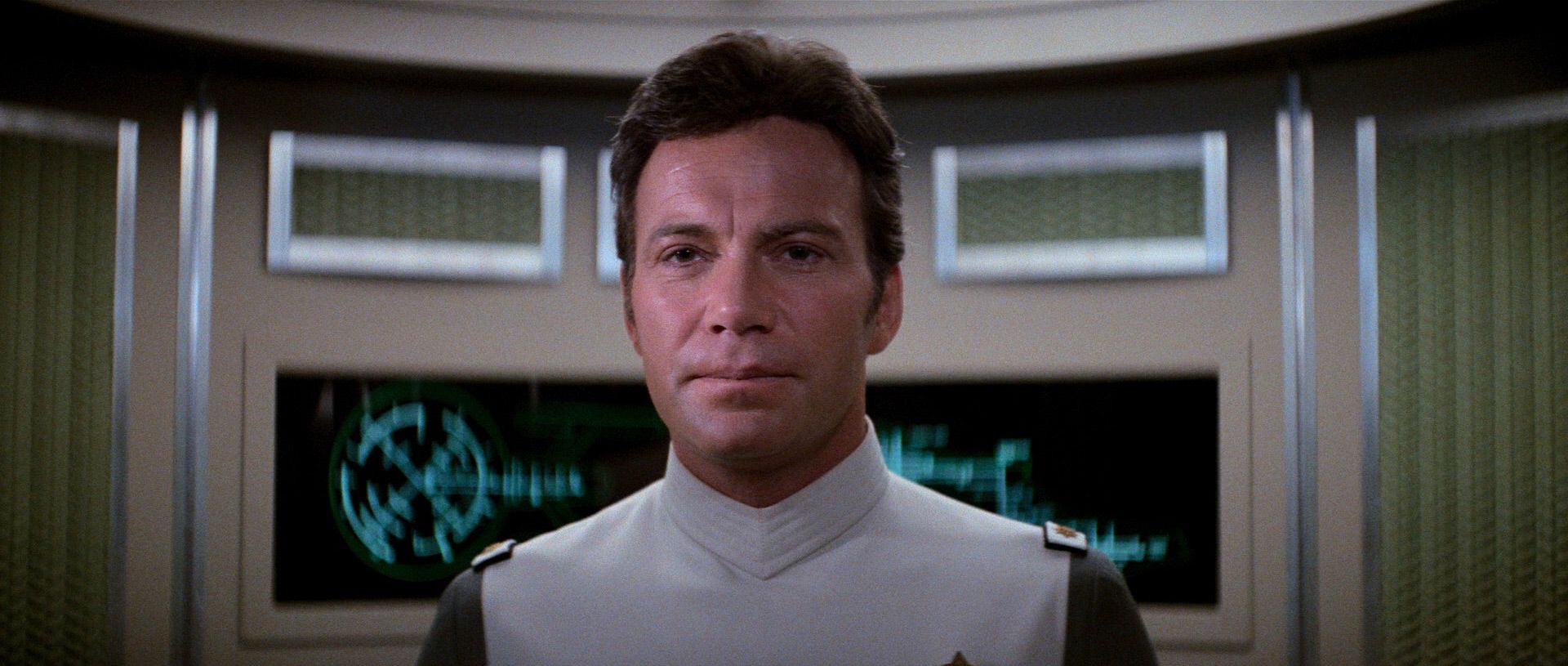
Kirk’s lust for his ship is never clearer than in the film’s infamous five-minute spacedock sequence, as Montgomery Scott (James Doohan) takes him on a tour of the now-refitted vessel in a small shuttle pod. “Two and a half years as Chief of Starfleet Operations may have left me a little stale, but I wouldn’t consider myself… untried,” he winks at Scotty, practically an admission that he’s ready to get back in the saddle after his own dry spell of sorts. Wise lingers over Kirk’s loving, adoring gaze as much as the camera caresses the curves and ample nacelles (if you’ll pardon the engineering parlance) of the ship’s new facelift, Jerry Goldsmith’s iconic score swelling as the shuttlepod slowly, teasingly approaches the concave airlock. With a burst of climactic brass to finish the cue, the two ships mate, and lo, we have our first of many sexually-charged dances between interstellar objects, and far from the last.
Before Kirk can dance, though, he must contend with the messy business of demoting the ship’s new lover/captain, Will Decker (a pre-disgrace Stephen Collins, blonde hair and boyish dimples sparkling with post-Star Wars Luke Skywalker energy). Squint a bit, and you can almost see the rakish good looks of TOS-era Shatner in there, something that necessarily colors his interactions with Kirk. He’s the virile young buck Kirk desperately wants to be again, and he’ll use his seniority/age/reputation to take back what’s his. “I’m sorry, Will,” Kirk offers, only for Decker to see through his facade. “You told me how envious you were, and how you hoped you’d get command of a starship again,” Decker bites back. “Looks like you found your way.” (It’s a throughline that would continue through the rest of the Kirk-era films, right down to his demotion to Captain — where he always wanted to be anyway — in The Voyage Home.)
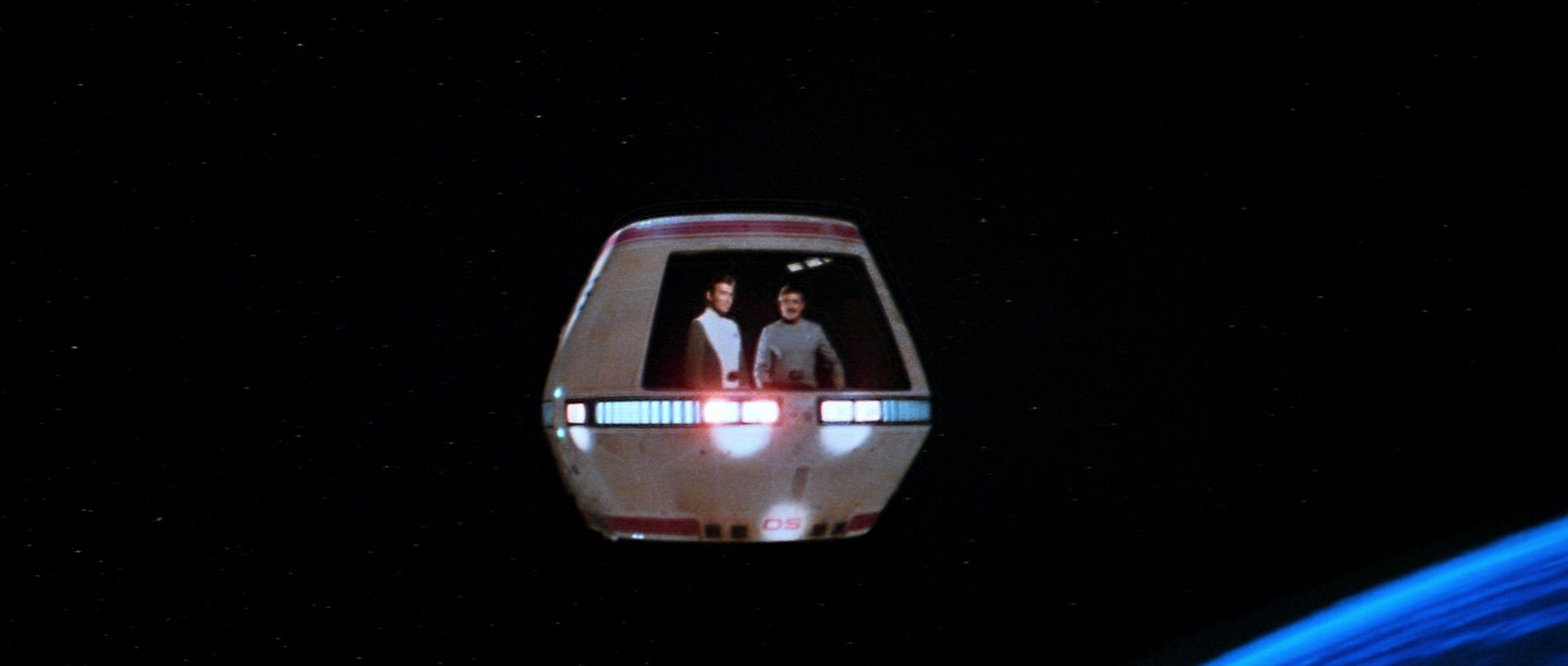
That sense of masculine competition runs through every interaction they have in the film, two jealous lovers fighting for the love of the same partner: Enterprise. At first, she belongs to Decker, the man who knows every one of her systems and supervised her refit. “You don’t know her a tenth as well as I do!” Decker barks at Kirk, and he’s right. In their first warp-speed shakedown, Kirk has some trouble satisfying her: the warp field goes unstable, throwing them into a wormhole that only Decker’s knowledge of her intricacies (e.g. phaser power being cut off during warp speed, requiring photon torpedoes to knock out an asteroid in their way) to correct. It’s a stark reminder of Kirk’s impotence, which he throws back in Decker’s face: “Stop…..competingwithmeDecker,” Shatner spits in his signature rat-a-tat cadence.
Fortunately, the tetchy, irritable Kirk begins to soften with the arrival of his close friends, companions whom he feels no small amount of love for on their own. There’s Bones, whose irascible attitude and wise counsel are an equalizing force to Kirk’s brashness (“Damnit, Bones. I need you!” Kirk pleads.) And, of course, Spock, himself searching for his own sense of meaning after abandoning his quest to throw away logic in favor of seeking out the mysterious call of V’Ger. When Bones appears, Kirks loosens up a bit; when Spock arrives in the wake of his warp-speed humiliation, he leans forward and gasps his name with almost romantic reverence.
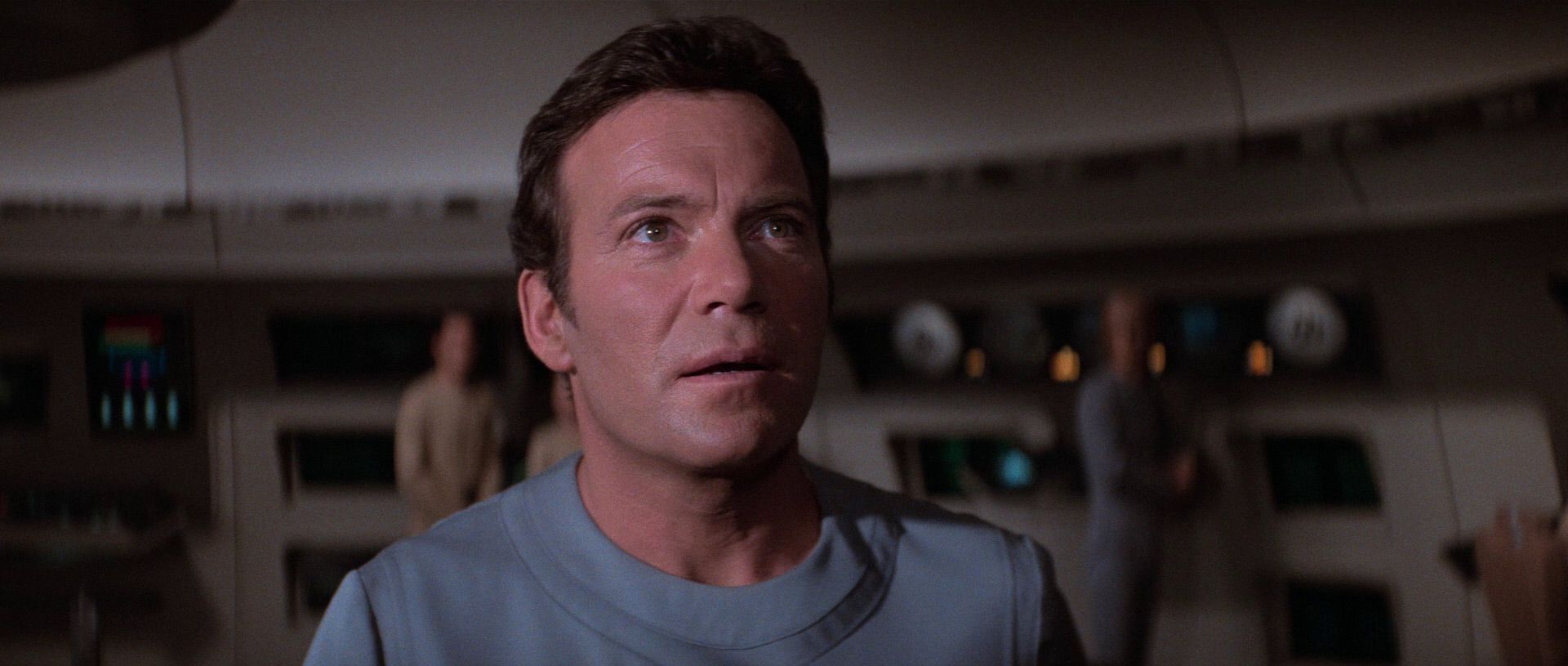
Just like his love for Enterprise, Kirk’s very essence is tied to his relationship with Spock, Bones, and the rest of the bridge crew; he expresses that love with longing looks, winks at Chekov, a lingering grasp of Scotty’s shoulder. His dynamic with his bridge crew, and Spock/Bones in particular, is rooted largely in the eroticism of touch. When he rescues Spock from his one-man mission to “penetrate the inner chambers” of V’Ger, the two reach for each other’s hands, joining them tightly. “This… simple feeling… is beyond V’Ger’s comprehension,” Spock says lovingly to Kirk. Sex and connection are innately intertwined in The Motion Picture, the expressions of beings who long for meaning in a vast, incomprehensible universe and find it in each other.











